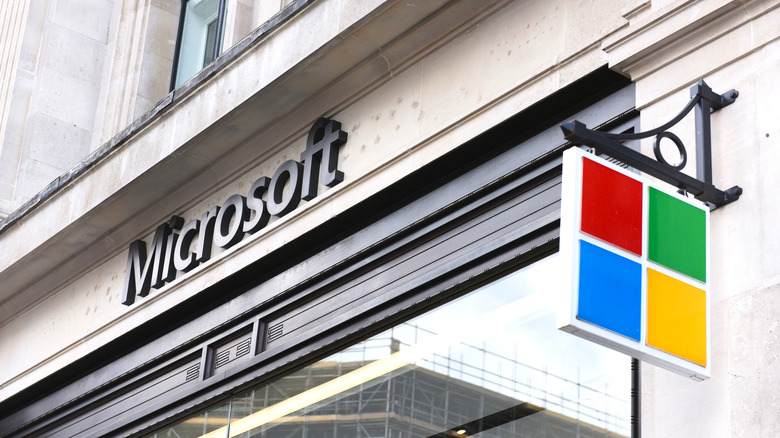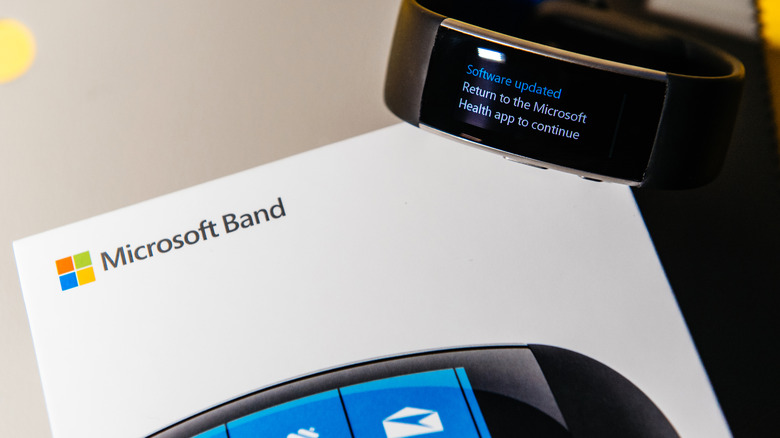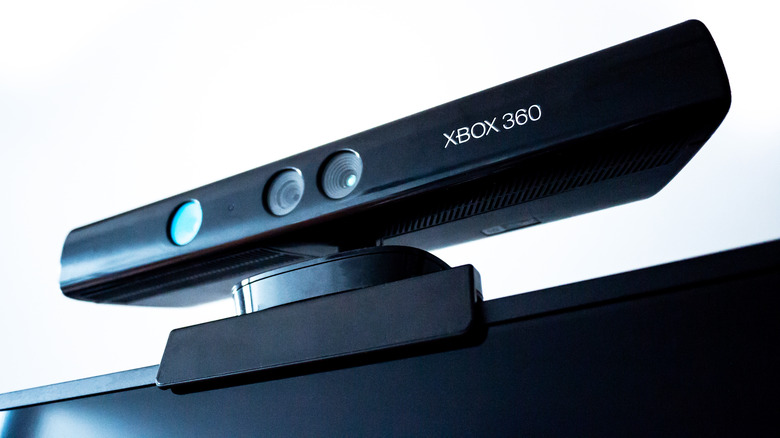5 Of The Best Products Microsoft Should Have Never Discontinued
Innovation and progress often lead to the introduction of new products that capture users' imaginations worldwide. However, amidst this ongoing wave of advancements, some gems are occasionally left behind, much to the dismay of loyal fans and technology enthusiasts. In the case of Microsoft, a trailblazer in the tech industry, several products garnered immense popularity and admiration, only to face the unfortunate fate of discontinuation.
Throughout its storied history, Microsoft has released myriad groundbreaking solutions that have shaped how we interact with computers and the digital landscape. Despite their impact and potential, Microsoft discontinued them, leaving a void in the hearts of many users who cherished these innovations.
Each entry in this article represents a unique and innovative creation, showcasing the company's commitment to pushing technology's limits. We will reminisce about the features and functionalities that once made these products stand out, understanding why they resonated deeply with their user base. Although time may have moved on, the legacy of these products endures, inspiring nostalgia and sparking discussions about what could have been.
Microsoft SideWinder
The Microsoft SideWinder series of gaming peripherals was undoubtedly one of the best products that Microsoft should have never discontinued. Launched in 1995, this family of game controllers for PCs included an impressive range of joysticks, gamepads, and steering wheels. Among the notable models were the 3D Pro joystick, Force Feedback Pro joystick, Freestyle Pro gamepad, and the Dual Strike gamepad. These peripherals quickly gained popularity in the gaming community due to their innovative features and excellent performance.
One of the key reasons why gamers loved the SideWinder series was its impeccable build quality and design. The products were crafted precisely, ensuring durability and reliability, even under intense gaming sessions. The attention to detail in creating a comfortable gaming experience sets these peripherals apart from competitors.
Another standout feature of the SideWinder series was its advanced customization options. Gamers could adjust the DPI settings on the mouse on the fly, allowing for precise control in various gaming situations. Customizable weights and interchangeable mouse feet provided a personalized feel and optimized performance on different surfaces. The ability to map buttons through software allowed gamers to tailor their peripherals to their playstyles, providing a competitive edge in games.
Despite the initial success, Microsoft made the regrettable decision to discontinue the SideWinder series in 2003 due to poor sales. However, the brand was relaunched in 2007 with the SideWinder gaming mouse, demonstrating that Microsoft still had an interest in the product line before shutting it down again in 2014.
Microsoft Money
Microsoft Money was a personal finance software that significantly impacted the world of personal financial management. Its bank account viewing, budget creation, and expense tracking features provided users with a comprehensive tool to manage their finances effectively. Despite its success and popularity, Microsoft discontinued Money in 2009, with sales ending in June of that year and online services removed in January 2011.
The success of Microsoft Money was in its user-friendly interface and powerful financial tracking capabilities. The software provided a simple and intuitive way to keep track of income, expenses, and savings goals. Its budget creation feature allowed users to set financial targets, monitor spending patterns, and make informed financial decisions.
An invaluable feature of Microsoft Money was its ability to connect with financial institutions and automatically import transaction data. This streamlined the process of updating financial information, making it convenient for users to stay on top of their financial situation. This feature was not only time-saving but also ensured accuracy in financial records.
One significant challenge Microsoft Money faced was competing with Intuit's Quicken, which has dominated the personal finance software market for years. Intuit's Quicken held a virtual monopoly, making it challenging for Microsoft Money to gain a substantial market share. Additionally, the rise of internet-based services like Mint.com and Quicken Online presented new competitors in the financial management space. But if Money was kept in Microsoft's product lineup and updated over the years, it could have given Intuit a run for its, well, money.
Microsoft Band
The Microsoft Band, a hybrid between an activity tracker and a smartwatch, was a unique Microsoft offering at the time. It offered a wide range of functionalities, making it a versatile wearable loved by many users. With features such as GPS, heart rate monitoring, and real-time data and notifications, it seamlessly integrated into users' lives, enhancing their smartphone experience while keeping them present.
One reason why the Microsoft Band was highly regarded was its excellent performance as a fitness tracker. It excelled in tracking heart rate, calorie burn, sleep quality, and sports activities, providing valuable insights for fitness enthusiasts and health-conscious individuals. The inclusion of built-in GPS was particularly appreciated, as it allowed users to track their workouts accurately without needing smartphones. The Band's improved design and build quality, featuring a silver metallic finish, larger display, and comfortable rubber band, made it a pleasure to wear during exercise and throughout the day.
Microsoft Band's compatibility with Windows Phone made it an appealing choice for users in that ecosystem. The seamless integration with the Microsoft Health app allowed easy content arrangement and customization options. The Band 2 also offered smartwatch functions like notifications and email checking, making it a practical productivity tool alongside its fitness tracking capabilities. However, the Microsoft Band was discontinued despite its strengths, disappointing its loyal users.
Microsoft Kinect
Kinect, a motion-sensing accessory for Xbox 360 and Xbox One, was peak Microsoft. It offered a glimpse into the future of gaming by enabling control through body movements and voice commands, revolutionizing the gaming experience for casual players and families alike. Kinect's early success was evident, with impressive sales of almost 30 million units.
However, despite its promising technology, Kinect faced several challenges that led to its eventual discontinuation. One of the primary issues was the lack of compelling games that fully utilized Kinect's capabilities. Many developers hesitated to divert resources from their successful controller-based franchises, resulting in limited support and mostly family-oriented or fitness titles. Kinect's accuracy and reliability were not always consistent either, leading to frustrations among users with glitches in voice and gesture commands. Its optimal performance also required significant space, making it less practical for smaller living rooms or gaming setups.
So, with all these negatives, why should it never have been discontinued? Because the Kinect was a bit ahead of its time. Suppose Microsoft had given the Kinect some time, we believe it would have thrived in today's gaming landscape — especially since Kinect's motion-sensing technology showed great potential and found new applications in non-gaming fields, such as computer vision and speech models for cloud-based Azure services. Its depth-sensing capabilities were leveraged in various industries beyond gaming, proving its versatility and usefulness.
Looking back, Kinect's discontinuation remains a significant missed opportunity for Microsoft.
Microsoft Expression Studio
Microsoft Expression Studio was a remarkable web and Windows client application design tool suite that Microsoft introduced in 2005. The suite, which included Expression Web, Expression Design, Expression Encoder Pro, and more, offered a comprehensive set of features tailored to meet the needs of web developers and designers alike.
One of the key features that made Microsoft Expression Studio great was its focus on web standards and seamless handling of PHP and .NET. The suite provided extensive CSS3, HTML5, and jQuery support, empowering developers to create modern and responsive web designs. Its advanced CSS tools allow for easy and future-proof design, making it a valuable asset for those looking to develop cutting-edge websites.
Expression Studio's integration of Expression Encoder Pro allowed users to work with multimedia content effectively, enabling them to encode and edit videos for web streaming. This feature further enhanced the suite's capabilities, making it a versatile tool for creating rich and interactive web experiences. Microsoft Expression Studio also received praise for its user-friendly interface and ease of use.
Despite its impressive features and capabilities, Microsoft discontinued Expression Studio in 2012. The decision shifted towards promoting Windows 8 apps, diverting focus from front-end web development. Expression Studio's discontinuation was another missed opportunity for Microsoft. The suite had the potential to continue evolving and remain competitive with other web design tools in the market. Its focus on web standards and robust features made it a worthy competitor to Adobe's offerings.




